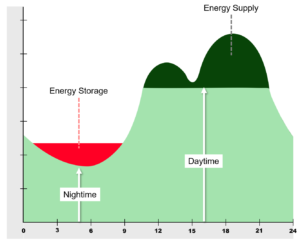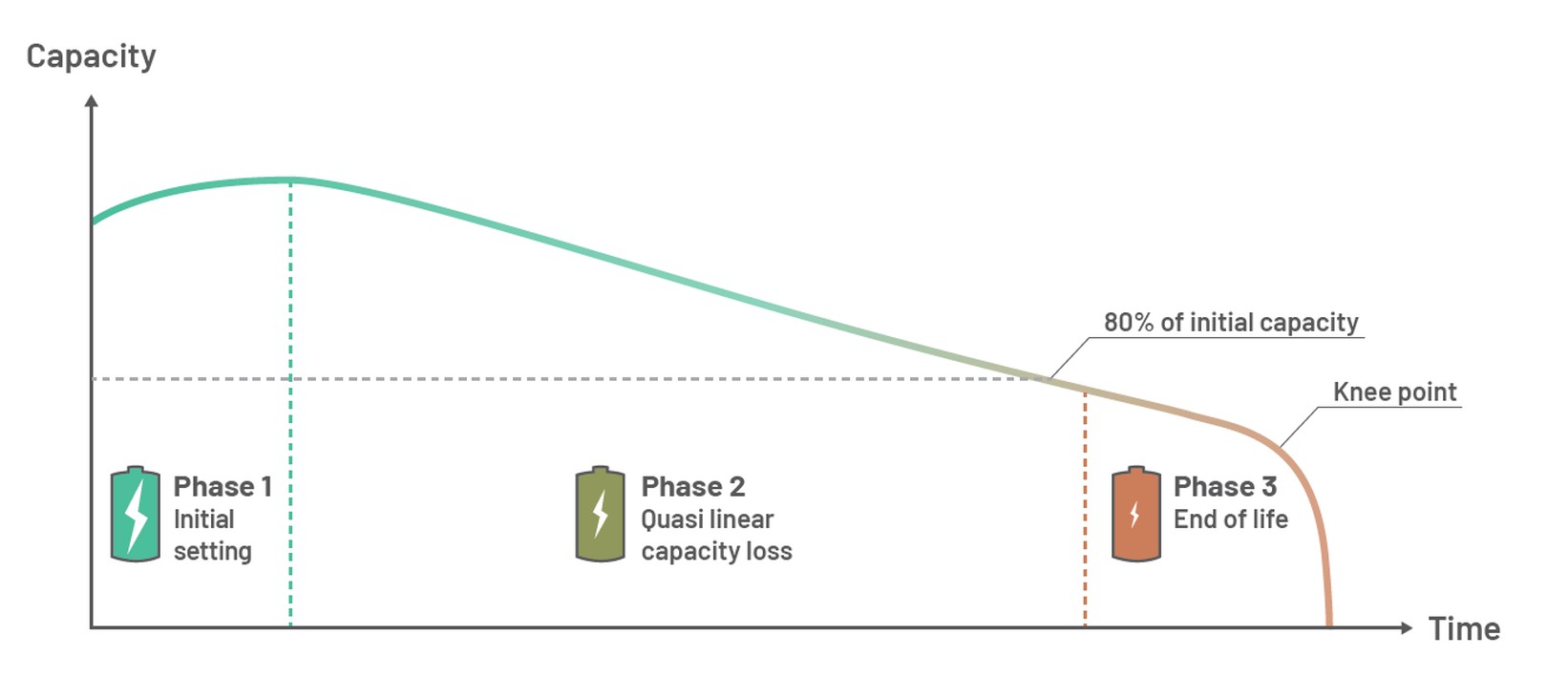As energy storage systems play an increasingly important role in the energy transition, battery degradation management becomes increasingly important.
Battery degradation will reduce energy storage system capacity
The storage capacity of all battery energy storage systems degrades over time, reducing capacity and performance. As the energy storage industry evolves, it is critical that battery storage project developers plan for and manage the inevitable “degradation curve.” Failure to do so will not only affect revenue, but may even affect the key role of battery energy storage systems in stabilizing grid operations, thereby affecting the energy transition.
Battery energy storage systems that take advantage of differences in electricity prices at different times are prone to rapid degradation. The energy storage system arbitrage strategy is to buy and store electricity when electricity prices are low and sell electricity when electricity demand increases.

Optimal charge and discharge intervals for battery storage systems are often inverse of arbitrage times, meaning storage system developers have limited understanding of how quickly battery storage system capacity will degrade.
Different battery types have different degradation rates. The main advantage of lithium iron phosphate (LFP) batteries is that they last longer compared to other lithium-ion batteries. And temperature, whether high or low, can have a significant impact on battery degradation.
Manage battery degradation by scaling deployments
Traditionally, energy storage developers have responded to battery degradation by scaling up when deploying battery storage systems. This approach requires pre-installation of more batteries than is actually needed, and deployment involves site preparation, cabling, and system integration. Excess capacity allows the battery energy storage system to offset the capacity loss of battery degradation, allowing the battery energy storage system to maintain the specified capacity during its life cycle.
A key advantage for energy storage system developers as they scale up battery deployment is that there is no need for new approvals, additional labor or commissioning of new hardware. In addition, it can also enable energy storage project developers to determine capital expenditures at the start of construction, mitigating the uncertainty of development costs. However, as the cost of lithium-ion batteries continues to fall, energy storage developers may incur wasted costs by adopting this approach.
Additionally, energy storage developers can offset capacity declines by adding batteries periodically over the life of a battery storage project. In this case, additional physical space and sufficient transformer capacity must be reserved during the initial deployment of the battery storage system to add new batteries. Proper planning is critical to minimizing battery energy storage system downtime and addressing associated risks.

As battery prices continue to fall, adding capacity is becoming an increasingly attractive way for energy storage developers to mitigate battery degradation and capacity loss. However, this may not apply in all cases, as each battery storage system is unique and different capacity enhancement strategies depend on preferences for potential risks and rewards. Nonetheless, the possibility of further cost reductions (especially given the low price of lithium-ion batteries) makes scaling up deployment feasible.
Enhance capacity strategy
Today there are two main ways to enhance capacity:”Alternating Current aAugmentation” and “Direct Current Shuffling”. Energy storage project developers can choose between the two based on their battery storage system type, grid connection and required services.
Alternating Current aAugmentation
The focus of AC capacity expansion is to improve the interaction between the battery energy storage system and the grid, enhance the stability of the power system, and realize the grid support function. Using the AC expansion method, some AC equipment is added to the energy storage project, including inverters and power conversion systems (PCS), which are responsible for using AC power for downstream equipment.
In addition to the power conversion system (PCS), new enclosures can be installed to house essential components, including batteries and associated safety, control and monitoring equipment. AC expansion methods can be installed without requiring major modifications to existing equipment, thus minimizing power outages. It also provides significant power system flexibility and reduces technical complexity and risk.
However, energy storage project developers should keep in mind some disadvantages associated with AC expansion, especially for grid-connected energy storage systems.
Adding power conversion system (PCS) equipment, while relatively simple from a technical perspective, requires licensing and regulatory approval at the time of connection to the grid. This process is cumbersome, time-consuming and extremely complex, making it difficult for developers to expand the capacity of battery energy storage systems. However, these limitations do not affect energy storage systems that operate independently of the grid. Microgrids operating in isolation can simplify the lengthy approval process, making them ideal for AC capacity expansion.
Direct Current Shuffling
For energy storage systems that need to be connected to the grid, DC conversion is a more suitable strategy. DC conversion prioritizes the internal distribution of energy within the battery pack to ensure balanced charge and discharge of single cells and modules, which is critical to extending battery life and improving system efficiency.
AC expansion focuses on the interaction between the battery energy storage system and the grid, while DC conversion optimizes energy distribution within the battery pack, providing higher internal efficiency and flexibility. By reconfiguring the batteries and distributing power evenly across the energy storage system, DC conversion can achieve a more balanced distribution of energy within the battery pack.

With the DC conversion method, the number and power of the power conversion systems (PCS) used in the battery energy storage system remain unchanged, which does not require licensing and regulatory approval. Compared to AC expansion, DC conversion requires lower equipment costs because the power infrastructure can be reused.
DC conversion is suitable for grid-connected battery energy storage systems. However, this approach is not always possible due to inherent technical limitations (e.g. from load breakers and busbar limitations to short-circuit ratings). Therefore, energy storage project developers must carefully evaluate the specific technology and operating conditions of their power systems before deciding whether to adopt AC expansion or DC conversion methods.
The important of battery degradation management
As more and more battery energy storage systems are deployed and operated around the world, mitigating the capacity loss of battery energy storage systems will become a focus for energy storage developers and integrators managing energy storage projects in the coming years.
Optimized battery degradation management practices will enable energy storage system developers to improve energy storage system performance, reduce costs, and work towards the renewable energy transition.
Continue to pay attention to our website or follow our social media accounts, we will push more battery technology articles and industry news.

